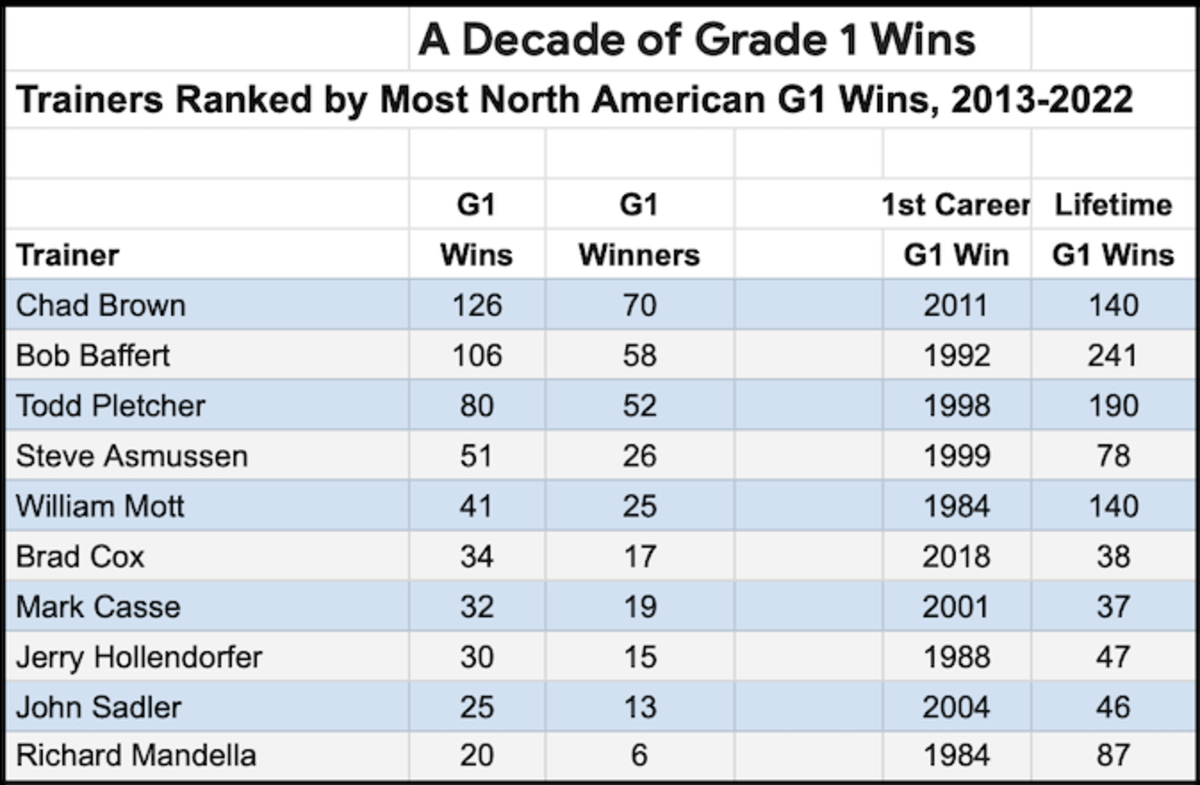I was very interested to read Frank Mitchell's piece on the pedigree of Two Phil's and the story of the Man o' War mare War Feathers, his 10th dam. I found this family is even richer in magnificent racehorses and unique stories that are truly fascinating for horse lovers and breeders.
War Plumage, the champion daughter of War Feathers mentioned in the article, produced to the cover of champion and classic winner Alsab the filly Plumed, a winner of just two races for her breeders James Cox Brady and Harold Oots. It is through Plumed that the direct female line of War Feathers and her daughter War Plumage reaches Two Phil's.
But there was another daughter of War Plumage that has touched modern racing history. Her 1945 daughter by King Cole named Gold Crest was a winner of just one race. At stud, Gold Crest produced the stakes-winning gelding Vantage and her daughter Sweeping Beauty produced four stakes winner. But it was her unraced daughter by the unheralded stallion Burg-el-Arab, who kept the line going. That was the 1952 filly Goldarette, also bred by Brady and Oots. The best stallion Goldarette was ever bred to was the English import Djeddah. By this time, Goldarette was under different ownership, and she dropped her Djeddah filly Silver Abbey for breeder Mrs. Anderson Fowler in New Jersey.
Also, by this time, this branch of the family of War Feathers had been very quiescent, with the only high caliber stakes winner being War Plumage. The Fowlers nursed this branch for the next couple of generations, until they bred the minor stakes-winning filly La Reine Rouge, whose stakes-placed daughter by Carson City named La Ville Rouge produced the brilliant but ill-fated Kentucky Derby hero Barbaro plus four other stakes performers.
Following Mr. Mitchell's wave illustration, the family was at the tip of the wave with the championship of War Plumage and then sunk to the lows of the wave with minor stakes winners at best for several generations until the wave crested again with the rise of Barbaro. The Grade 1- winning sprinting filly Emma's Encore also hails from this family, her second dam being a half-sister to the dam of Barbaro.
However, there is yet another branch of the family, going back to the dam of War Feathers, an unraced daughter of William Rufus who was imported to the United States to serve in the broodmare band of Admiral Cary T. Grayson. Five years prior to the birth of her Man o' War filly War Feathers, Tuscan Red, in 1919, foaled a daughter of the Commando stallion Celt. Named Leghorn, this filly was only a minor stakes winner. As a broodmare, she was average, with a small stakes winner to her credit. But through her daughter Tophorn, by Bull Dog, there came the good filly Athene, a winner of the Selima Stakes. Tophorn also produced the durable filly Dinner Horn, by Pot au Feu.
Tophorn became the second dam of the full-siblings and champions Primonetta and Chateaugay. The latter won the 1963 Kentucky Derby and Belmont Stakes enroute to champion 3-year-old honors. The former, Primonetta, was a special favorite of mine.
I learned she was alive at the age of 32 back in the summer of 1990. I contacted Darby Dan Farm and found she was at their Ohio division near Columbus in retirement. I was allowed to visit her and found a mare in beautiful shape for being as old as she was. She shared her retirement with her close companion, the stakes producer Queen's Paradise.
Over the next two and a half years, I visited Primonetta and Queen's Paradise several times. The staff of Darby Dan gave Primonetta a birthday party every year on her actual birthday on Feb. 14. I was invited to her party in 1991. She had a carrot cake and a film of her Alabama Stakes victory was shown on a sheet hung from a wall of her barn. She died in January 1993 at the age of 35. The little pink and red hearts I had decorated her stall with were buried with her, which touched my heart so much, and she rests beneath a white boulder headstone on the Darby Dan Ohio property. Primonetta was the 1978 Broodmare of the Year and the dam of three major stakes winners.
There again, there had been a wave; the nice filly Athene and then quiet until the emergence of the dual champion siblings Primonetta and Chateaugay. Then a lull until the 1970s, when a half-sister to Primonetta and Chateaugay, the My Babu mare Luiana, produced Little Current, 1974 winner of the Preakness and Belmont Stakes and champion 3-year-old. Another lull until the 2000s, and there came Hard Spun, second in the Kentucky Derby to Street Sense, a Grade 1 winner, and very successful stallion, and sire of Two Phil's. Champion older horse Improbable also hailed from this family, as his fourth dam is none other than Luiana.
One final observation on the pedigree of Two Phil's. He is line bred in the female line to Tuscan Red. His sire, Hard Spun, as we have seen, goes back to her via her daughter Leghorn, and his dam traces directly to her via her daughter War Feathers. This type of line breeding has produced a number of top caliber performers, including two fillies from my youth I absolutely loved, Numbered Account and Relaxing. Tough, honest, and talented on the racetrack, Two Phil's should make a very interesting addition to the stallion ranks.
Elizabeth Martiniak, horse lover and free-lance racing writer
Janesville, Wisconsin
*************************************
If you would like to submit a letter to the editor, please write to info at paulickreport.com and include contact information where you may be reached if editorial staff have any questions.
The post Letter To The Editor: Deep Dive Into Pedigree Of Two Phil’s Reveals Rich Family History appeared first on Horse Racing News | Paulick Report.
Source of original post

